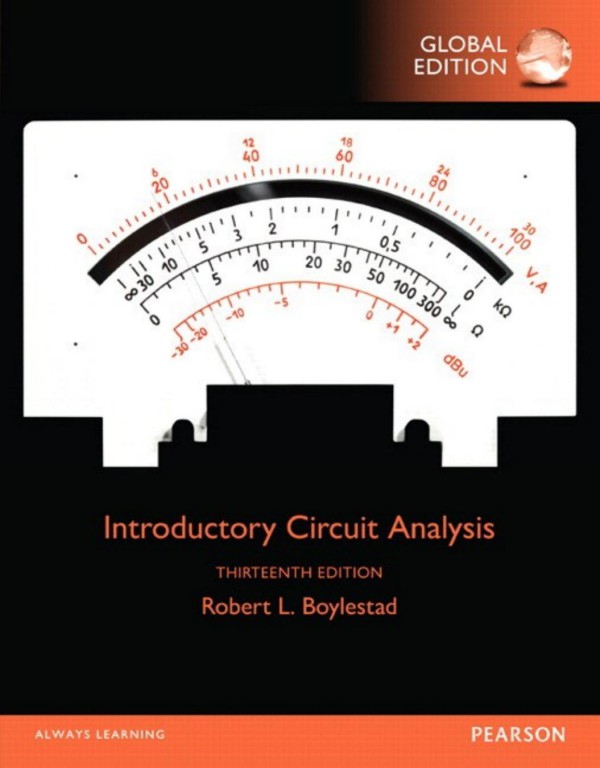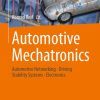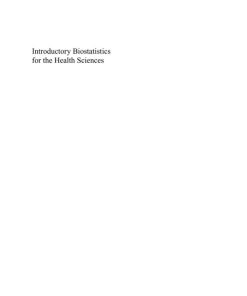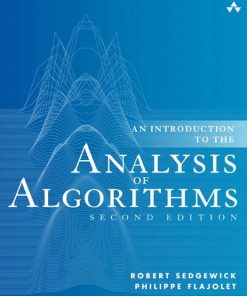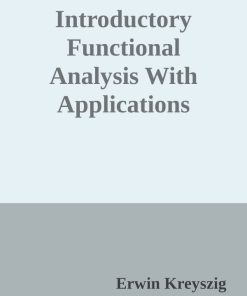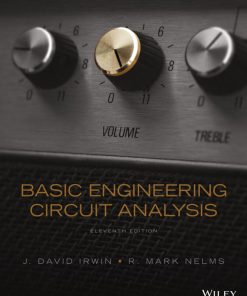Introductory Circuit Analysis 13th Edition by Robert Boylestad 1292098953 9781292098951
$50.00 Original price was: $50.00.$25.00Current price is: $25.00.
Authors:Robert L. Boylestad , Series:Electrical Engineering [106] , Tags:Engineering; Electrical; Electronics , Author sort:Boylestad, Robert L. , Ids:9781292098951 , Languages:Languages:eng , Published:Published:Jun 2016 , Publisher:Pearson Higher Education & Professional Group , Comments:Comments:”For courses in DC/AC circuits: conventional flow ” The Latest Insights in Circuit Analysis “Introductory Circuit Analysis,” the number one acclaimed text in the field for over three decades, is a clear and interesting information source on a complex topic. The Thirteenth Edition contains updated insights on the highly technical subject, providing readers with the most current information in circuit analysis. With updated software components and challenging review questions at the end of each chapter, this text engages readers in a profound understanding of Circuit Analysis.
Introductory Circuit Analysis 13th Edition by Robert Boylestad – Ebook PDF Instant Download/Delivery. 1292098953, 9781292098951
Full download Introductory Circuit Analysis 13th Edition after payment

Product details:
ISBN 10: 1292098953
ISBN 13: 9781292098951
Author: Robert L. Boylestad
Preface Looking back over the past twelve editions of the text, it is interesting to find that the average time period between editions is about 3.5 years. This thirteenth edition, however, will have 5 years between copyright dates clearly indicating a need to update and carefully review the content. Since the last edition, tabs have been placed on pages that need reflection, updating, or expansion. The result is that my copy of the text looks more like a dust mop than a text on technical material. The benefits of such an approach become immediately obvious—no need to look for areas that need attention—they are well-defined. In total, I have an opportunity to concentrate on being creative rather than searching for areas to improve. A simple rereading of material that I have not reviewed for a few years will often identify presentations that need to be improved. Something I felt was in its best form a few years ago can often benefit from rewriting, expansion, or possible reduction. Such opportunities must be balanced against the current scope of the text, which clearly has reached a maximum both in size and weight. Any additional material requires a reduction in content in other areas, so the process can often be a difficult one. However, I am pleased to reveal that the page count has expanded only slightly although an important array of new material has been added. New to this edition In this new edition some of the updated areas include the improved efficiency level of solar panels, the growing use of fuel cells in applications including the home, automobile, and a variety of portable systems, the introduction of smart meters throughout the residential and industrial world, the use of lumens to define lighting needs, the growing use of LEDs versus fluorescent CFLs and incandescent lamps, the growing use of inverters and converters in every phase of our everyday lives, and a variety of charts, graphs, and tables. There are some 300 new art pieces in the text, 27 new photographs, and well over 100 inserts of new material throughout the text. Perhaps the most notable change in this edition is the removal of Chapter 26 on System Analysis and the breaking up of Chapter 15, Series and Parallel ac Networks, into two chapters. In recent years, current users, reviewers, friends, and associates made it clear that the content of Chapter 26 was seldom covered in the typical associate or undergraduate program. If included in the syllabus, the coverage was limited to a few major s ections of the chapter.
Introductory Circuit Analysis 13th Table of contents:
1.1 The Electrical/Electronics Industry
1.2 A Brief History
1.3 Units of Measurement
1.4 Systems of Units
1.5 Significant Figures, Accuracy, and Rounding Off
1.6 Powers of Ten
1.7 Fixed-Point, Floating-Point, Scientific, and Engineering Notation
1.8 Conversion Between Levels of Powers of Ten
1.9 Conversion Within and Between Systems of Units
1.11 Conversion Tables
1.12 Calculators
1.13 Computer Analysis
2.2 Atoms and Their Structure
2.3 Voltage
2.4 Current
2.5 Voltage Sources
2.6 Ampere-Hour Rating
2.7 Battery Life Factors
2.8 Conductors and Insulators
2.10 Ammeters and Voltmeters
2.11 Applications
2.12 Computer Analysis
3.1 Introduction
3.2 Resistance: Circular Wires
3.3 Wire Tables
3.4 Temperature Effects
3.5 Types of Resistors
3.6 Color Coding and Standard Resistor Values
3.7 Conductance
3.8 Ohmmeters
3.9 Resistance: Metric Units
3.10 The Fourth Element—The Memristor
3.11 Superconductors
3.12 Thermistors
3.14 Varistors
3.15 Applications
4.2 Ohm’s Law
4.3 Plotting Ohm’s Law
4.4 Power
4.5 Energy
4.6 Efficiency
4.7 Circuit Breakers, GFCIs, and Fuses
4.8 Applications
4.9 Computer Analysis
5.1 Introduction
5.2 Series Resistors
5.3 Series Circuits
5.4 Power Distribution in a Series Circuit
5.5 Voltage Sources in Series
5.6 Kirchhoff’s Voltage Law
5.7 Voltage Division in a Series Circuit
5.8 Interchanging Series Elements
5.9 Notation
5.10 Ground Connection Awareness
5.11 Voltage Regulation and the Internal Resistance of Voltage Sources
5.12 Loading Effects of Instruments
5.13 Protoboards (Breadboards)
5.14 Applications
5.15 Computer Analysis
6.2 Parallel Resistors
6.3 Parallel Circuits
6.4 Power Distribution in a Parallel Circuit
6.5 Kirchhoff’s Current Law
6.6 Current Divider Rule
6.7 Voltage Sources in Parallel
6.8 Open and Short Circuits
6.9 Voltmeter Loading Effects
6.10 Summary Table
6.11 Troubleshooting Techniques
6.12 Protoboards (Breadboards)
6.13 Applications
6.14 Computer Analysis
People also search for Introductory Circuit Analysis 13th :
boylestad introductory circuit analysis
robert l boylestad introductory circuit analysis
introductory circuit analysis by boylestad 13th edition
introductory circuit analysis 14th
You may also like…
eBook PDF
Electrical Circuit Theory and Technology 3rd Edition by John Bird 075068139X 978-0750681391
eBook EPUB
Introduction to Electrical Circuit Analysis 1st Edition by Ozgur Ergul 1119284937 9781119284932
eBook PDF
Principles of Forensic Audio Analysis 1st edition by Robert Maher 9783319994536 3319994530
eBook PDF
Basic Engineering Circuit Analysis 11th edition by David Irwin, Robert Nelms 9781118539293

